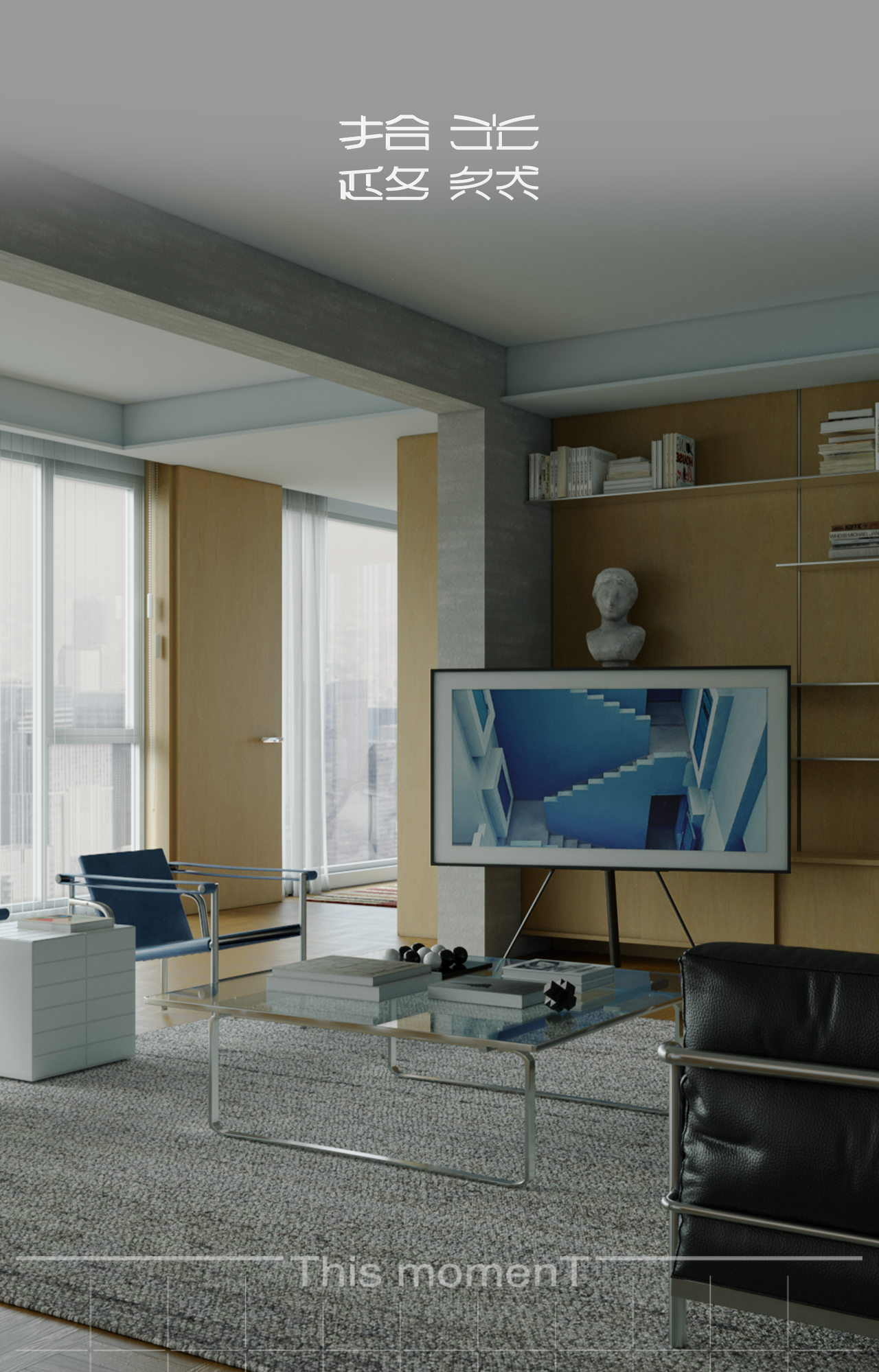Slate Cabin is a Writer’s Retreat Perched on the Edge of Snowdonia National Park
2017-06-22 20:28
Architect: TRIAS Studio Project: Slate Cabin Location: Mid Wales, United Kingdom Photography: Courtesy of Trias
建筑师:Trias工作室项目:板岩室位置:威尔士中部,英国摄影:Trias提供
Slate Cabin is a writer’s retreat perched on the edge of Snowdonia National Park in Mid Wales, United Kingdom. The building is set in a lush green valley that is ringed by barren, windswept hills and grazing pastures. In response to this beautiful and yet harsh landscape, the cabin is a reductive black box that is anchored to the ground. It provides protection and respite to visitors who wish to escape the wind, rain and snow.
石板小屋是一个作家的撤退,坐落在英国威尔士中部的斯诺多尼亚国家公园的边缘。这座建筑坐落在一个郁郁葱葱的绿色山谷里,周围环绕着贫瘠的、风吹草动的山丘和牧场。作为对这美丽而又严酷的景观的回应,小屋是一个简约的黑匣子,锚定在地面上。它提供保护和休息的游客谁想逃离风,雨和雪。
Slate Cabin is inspired by the very bedrock of Wales, a country built on – and of – slate. Wales is a unique landscape, scattered with stone-strewn mountains, abandoned quarries and old slate homes, which have stood for hundreds of years. These qualities encouraged us to base our design around this local and historically significant material.
石板小屋的灵感来源于威尔士的基石,这是一个建立在石板上的国家。威尔士是一个独特的景观,散布着散布在石头上的山脉、废弃的采石场和古老的石板房屋,它们已经屹立了数百年。这些品质鼓励我们将我们的设计建立在这种本地和具有历史意义的材料上。
Slate Cabin is envisaged as a visual infrastructure for collecting and cataloguing Welsh slate. The exterior of the cabin is covered in local stone, which is fixed to the building like oversized shingles. These recycled slate tiles were reclaimed from nearby farms, and are mottled and pockmarked with weather and time. They result in a building that is at home in the hills, with a rugged and rustic appearance.
石板小屋被设想为收集和编目威尔士石板的视觉基础设施。船舱的外部覆盖着当地的石头,像特大号的石板一样固定在建筑物上。这些回收的石板瓷砖是从附近的农场回收的,有斑驳的斑点,有时间和天气的麻子。他们建造了一座坐落在山里的房子,外观崎岖而又古朴。
In essence, the building is a simple, rectangular volume. The exterior is dark and muted, with a contrasting interior that is honeyed and warm. The proportions of the building are elegant and restrained, while still meeting the tight footprint required by the design brief. Moving inside the cabin, one is welcomed by a light, bright interior space. The spatial organisation is simple, with a single room for essential activities – sleeping, cooking, resting and relaxing – and a bathroom tucked behind. The main room is designed as a crafted piece of joinery. Subtle shifts and steps are used to differentiate between functions, creating rooms within a larger volume.
实质上,建筑是一个简单的,矩形的体积。外表是黑暗和静默的,与之形成鲜明对比的内部是蜂蜜和温暖。建筑的比例是优雅和克制的,但仍然满足设计简约所要求的紧凑脚印。在舱内移动,一个受到明亮的室内空间的欢迎。空间组织很简单,只有一个房间可以进行基本的活动-睡觉、做饭、休息和放松-还有一个浴室藏在后面。主房间被设计成一件精心制作的细木工。细微的变化和步骤被用来区分功能,在更大的体积内创建房间。
The bed sits up on a raised platform, and pulls back at one end to provide space for a seat and desk. The bed head, meanwhile, wraps around to house a built in seat and table. This acts as a cosy place to share meals, which can be cooked on a small, wood-burning stove tucked in one corner. Elsewhere, storage and shelves are artfully integrated into the building design. Every millimetre of the cabin is meticulously designed and put to use. Stairs to the bed platform become a space to store books and shoes, while a shelf above the bathroom acts as a slot for stashing hiking packs. The space is a continuous balance of efficiency and comfort. All services are self-contained, which means that the cabin operates off-the-grid.
这张床坐在一个高高的平台上,从一端向后拉,为座位和桌子提供空间。床头,同时,包裹住一个内置的座位和桌子。这是一个舒适的地方,可以共享食物,可以在一个小的,木材燃烧的炉子夹在角落。在其他地方,仓库和货架巧妙地融入了建筑设计。机舱的每一毫米都经过精心设计并投入使用。通往床台的楼梯成为存放书籍和鞋子的空间,而浴室上方的架子则充当存放徒步旅行包的插槽。空间是效率和舒适度的持续平衡。所有的服务都是自成一体的,这意味着机舱在电网之外运行.
Throughout the cabin, openings are carefully considered to capture small vignettes and views. Along one wall, a slot window frames a long, panoramic landscape of mountains and fields. It’s a view best experienced when sitting or lying down. Meanwhile, a continuous lantern of high windows bathe the space in natural light. Glancing up to these windows reveals glimpses of passing clouds, distant hills and spindly, swaying branches.
在整个机舱里,要仔细考虑开口,以捕捉小的小插曲和景色。沿着一堵墙,一扇狭长的窗户构成了一片山峦和田野的全景。坐着或躺下时,这是一种最有经验的景色。同时,一个高窗户的连续灯笼在自然光下沐浴着空间。向这些窗户望去,可以看到一望无际的云彩,远处的小山和细长的摇曳的树枝。
To create a serene experience, the cabin is built of as few materials as possible. Soft, gentle tones and textures intentionally contrast the stark stone exterior. Almost all of the surfaces and joinery are lined in birch plywood, which softly diffuses the light. The ceilings are draped in a woven hessian, a playful reference to the rural context. The wood-burning stove is a standout object, and is crisply outlined in a punchy, contrasting black. All of the fittings are burnished brass.
为了创造一种宁静的体验,小屋是用尽可能少的材料建造的。柔和,柔和的色调和纹理有意对比赤裸裸的石头外观。几乎所有的表面和细木工都用桦木胶合板衬里,这种胶合板可以柔和地散发光线。天花板上覆盖着一个织好的麻布,这是对乡村环境的一种有趣的参照。燃烧木材的炉子是一个突出的物体,并清晰地勾勒在一个穿孔,对比黑色。所有的配件都是有光泽的黄铜。
The architectural approach explores the tension between permanence and impermanence, the efficient act of prefabrication and the slow beauty lent by natural materials. The building bears the traces of time, and is designed to blend in to its rural setting. Slate Cabin is a place of quiet retreat, where people might go to read, write and relax. As a space, it forms a place where nature can be viewed and contemplated. This design was commissioned as a result of an international competition process, with construction completed in 2017.
建筑方法探讨了永恒与无常之间的张力,预制的有效行为,以及天然材料所赋予的缓慢美。这座建筑带有时间的痕迹,是为了融入乡村环境而设计的。石板小屋是一个静修的地方,人们可以在那里读书、写字和放松。作为一个空间,它形成了一个可以观察和思考自然的地方。这项设计是国际竞争进程的结果,于2017年完工。
 举报
举报
别默默的看了,快登录帮我评论一下吧!:)
注册
登录
更多评论
相关文章
-

描边风设计中,最容易犯的8种问题分析
2018年走过了四分之一,LOGO设计趋势也清晰了LOGO设计
-

描边风设计中,最容易犯的8种问题分析
2018年走过了四分之一,LOGO设计趋势也清晰了LOGO设计
-

描边风设计中,最容易犯的8种问题分析
2018年走过了四分之一,LOGO设计趋势也清晰了LOGO设计














































